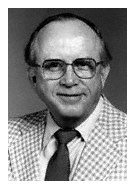
Dedication

Prof. O. Dean Gregory, Ed.D.
This paper, presented at NYS TESOL 2000, in Rochester, New York, is dedicated to the late Professor Gregory, who passed away this spring. Professor Gregory was the Associate Director at the Applied English Center, University of Kansas, and taught language-teaching seminars in the linguistics department. He was also the A.E.C.'s acting director when I first applied for a part-time job as a conversation leader there during my senior year at K.U., in 1980.
Several years later, working as a graduate teaching assistant at the A.E.C. while studying for my master's in TESL, I had the good fortune to learn from Professor Gregory as a teacher, as a member of the A.E.C. staff and as an M.A. candidate working on my master's research paper. Professor Gregory taught us a simple diagram for teaching the prepositions of place & time, "in, on & at," which I have never seen anywhere else and which students always seem to appreciate. The image helps English learners get a feel for the basic concepts controlling most of our uses of these three prepositions, from the more general "in" to the more specific "at."

Professor Gregory was a stalwart representative of the highest standards and best ideals within ESL and the teaching profession itself. On a number of occasions when conversing with different individuals within the TESOL profession around the world, I have repeated Professor Gregory's statement that "the only thing we will not tolerate in our profession is intolerance." He made this strong, unequivocal statement during a class discussion about diversity, racism and bigotry, in which one of my classmates was looking for the right way to respond to inappropriate attitudes and language in her ESL classroom.
Professor Gregory led the ESL teaching seminar in which I began what turned out to be my masterís project on conversation flowcharts. I spent a number of hours drawing flowcharts to show, for instance, the many directions a conversation could go beginning with a simple "Howís it going?" I had no clear idea where I was going with this project, but felt that flowcharts could be valuable in teaching ESL.
In my ERIC search, I found a 1977 article by Mohan and Katz, which marked the first use of flowcharts in ESL (to teach a shopping situation), and a 1980 article by J.B. Heaton on how flowcharts were used in a curriculum to help teachers in Singapore manage their classrooms in the new official language of English.
But it was Professor Gregory who greatly simplified the scope of my masterís research paper when he showed me Christopher Candlinís 1981 book on communicative teaching, with a discourse chart by Peter Mohr. That chart became the basis of my masterís paper, as I built a teaching method around it. Thanks to Professor Gregory, I finished my masterís much sooner and thanks to his close reading of my paper--as a member of my master's research committee--he ensured the final product was relevant and readable.
I have benefited immensely from Dr. Gregory's instruction and advice. In my talk at NYS TESOL 2000, I hope to have reflected positively on his teaching example.